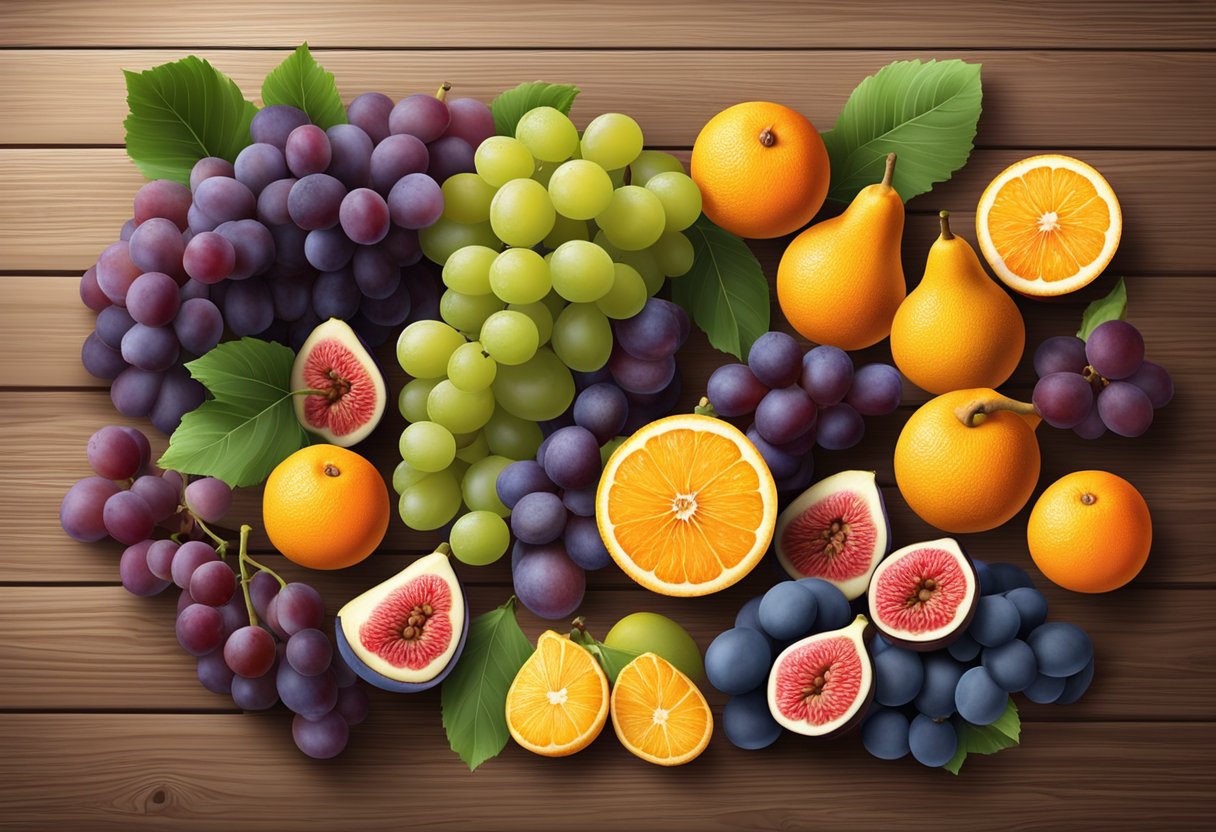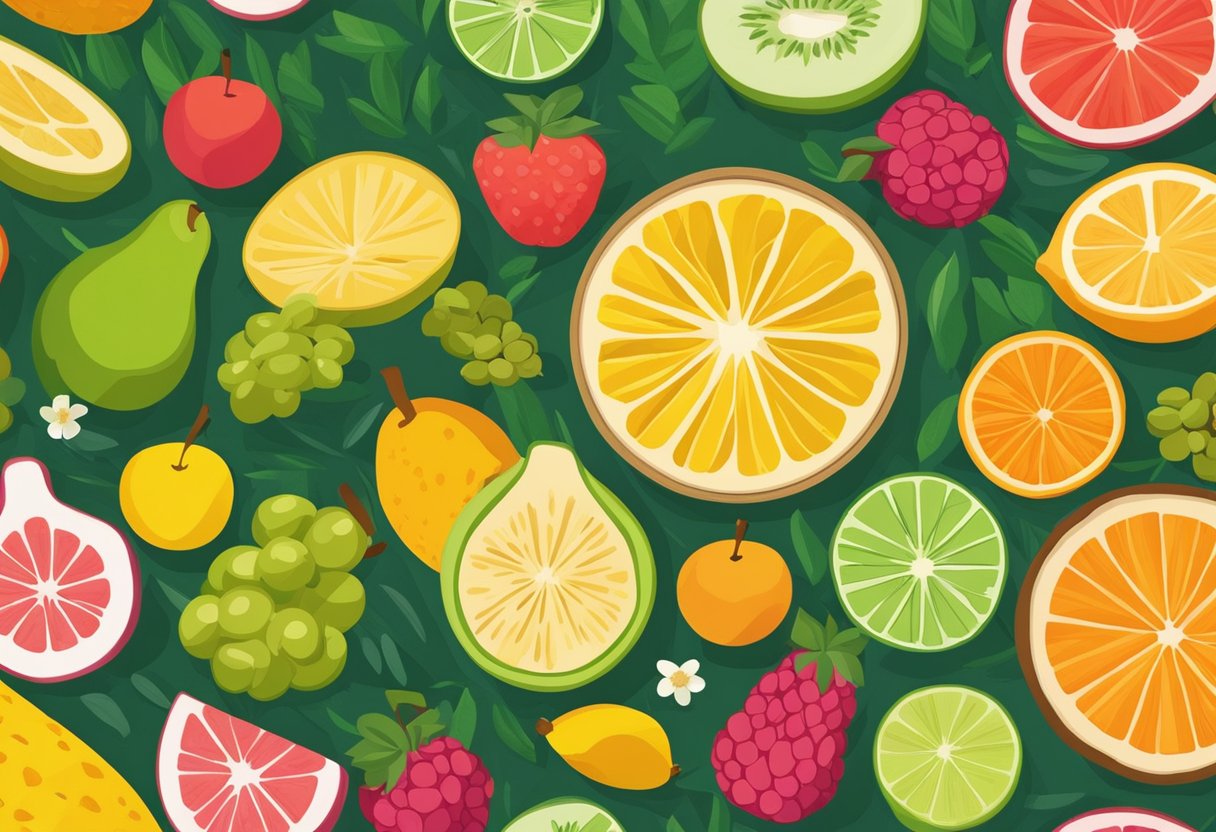Adopting a gluten-free Mediterranean diet offers an array of health benefits while encompassing a variety of fresh fruits that are naturally free of gluten. This dietary pattern emphasizes the consumption of plant-based foods, lean protein, and healthy fats, adhering to the tenants of Mediterranean eating while also catering to the needs of those with gluten sensitivity or celiac disease. By integrating fruits such as apples, oranges, and berries, individuals can enjoy a rich tapestry of flavors and nutrients that support overall health.

The Mediterranean diet is renowned for its connection to reduced risks of chronic diseases including heart disease and Type 2 diabetes. It is a lifestyle approach that encourages not only healthy eating but also the enjoyment of food and communal meals. When customized to exclude gluten-containing grains, this diet still retains its core benefits. Careful planning and the inclusion of gluten-free grains like quinoa and rice ensure a balanced and nutritious menu, providing a practical framework for health-conscious individuals looking to maintain a gluten-free regimen.
Key Takeaways
- Fresh fruits are a staple in the gluten-free Mediterranean diet, offering both flavor and nutrition.
- The diet is associated with numerous health benefits, such as a lowered risk of chronic diseases.
- Adhering to a gluten-free Mediterranean lifestyle involves careful meal planning and choosing gluten-free grains.
Table of Contents
Understanding the Gluten-Free Mediterranean Diet

The gluten-free Mediterranean diet blends traditional Mediterranean eating habits with the necessity to avoid gluten, particularly benefitting those with celiac disease. This diet emphasizes the consumption of fresh fruits, vegetables, nuts, and the use of olive oil while strictly excluding gluten-containing foods.
Core Principles of the Mediterranean Diet
The Mediterranean diet is celebrated for its emphasis on plant-based foods, such as vegetables, fruits, legumes, and nuts, as well as the predominant use of olive oil for healthy fats. It encourages moderate amounts of fish and poultry and suggests a low intake of dairy products and red meats. Freshness and seasonality are key components, with a focus on whole foods over processed options.
What Does Gluten-Free Really Mean?
A gluten-free diet excludes the protein gluten, found in grains such as wheat, barley, and rye. This diet is essential for individuals with celiac disease, an autoimmune disorder where gluten causes damage to the small intestine. Being gluten-free extends beyond avoiding bread or pasta; it entails careful consideration of all ingredients in a meal to prevent cross-contamination and unintended gluten exposure.
Health Benefits of a Gluten-Free Mediterranean Diet

The Gluten-Free Mediterranean Diet, rich in whole foods, healthy fats, and antioxidants, has been identified to bolster health. This diet specifically aids in combating chronic diseases, managing weight, and reducing inflammation.
Cardiovascular Wellness
The Gluten-Free Mediterranean Diet emphasizes the consumption of olive oil and other healthy fats, which have been shown to improve heart health. Studies suggest that this dietary approach can lead to a reduction in the risk of heart disease, due to its focus on whole grains, fruits, and vegetables, all of which are high in beneficial fiber.
Weight Management
Weight loss is more achievable with a diet rich in whole foods and low in processed items. This diet is abundant in fruits, vegetables, legumes, and whole grains that contain fiber, helping individuals feel full longer and reducing the tendency to overeat.
Reduced Inflammation and Cancer Risk
The Gluten-Free Mediterranean Diet’s anti-inflammatory properties stem from its high antioxidant content. These antioxidants can attenuate chronic inflammation, which is a risk factor for many types of cancer. Regular consumption of a variety of fruits and vegetables has been linked to a reduction in cancer risk.
Prevention and Management of Diabetes
By focusing on a spectrum of high-fiber whole foods and limiting the intake of refined sugars and processed foods, this diet can aid in blood sugar management and may prevent the onset of type 2 diabetes. In people already diagnosed with diabetes, this dietary pattern can help manage the condition more effectively.
Key Components of the Diet

Incorporating fresh produce and gluten-free grains into a Mediterranean diet enhances health without sacrificing flavor or variety. Adherence to this dietary pattern involves a specific selection of food groups rich in nutrients and naturally devoid of gluten.
Gluten-Free Grains
Gluten-free whole grains form the foundation of the diet, offering essential vitamins, minerals, and fiber. Common choices include:
- Rice: A versatile staple, available in multiple varieties such as brown and wild.
- Quinoa: A protein-rich grain that doubles as a complete source of amino acids.
- Buckwheat: Despite its name, it’s gluten-free and can be used in flour form.
- Corn: Available whole, as cornmeal, or popcorn; always ensure it’s free from cross-contamination.
Fruit and Vegetable Selection
A diverse array of fruits and vegetables provides antioxidants and phytonutrients. Key components entail:
- Tomatoes, Broccoli, Zucchini: Rich in vitamins and integral for various dishes.
- Cucumbers, Eggplant: Low-calorie options for hydration and fiber.
- Fruit: Seasonal picks such as berries, citrus, and apples, ensure high vitamin content and natural sweetness.
Protein Sources
Protein in the Mediterranean diet is predominantly plant-based and includes:
- Fish: Especially oily fish like salmon, rich in omega-3 fatty acids.
- Legumes: Lentils, beans, and chickpeas are excellent protein sources and are gluten-free.
- Nuts: Almonds, walnuts, and pistachios provide healthy fats and protein.
Healthy Fats and Oils
Heart-healthy fats are central to this diet, with a focus on:
- Olive Oil: A staple for cooking and dressings, known for its monounsaturated fats.
- Nuts and Seeds: Flaxseeds, chia seeds, and nut butters add crunch and nutrition.
- Avocado: Contains beneficial fats and can be used in various dishes.
Dairy and Dairy Alternatives
Dairy is consumed in moderation, highlighting:
- Greek Yogurt: A great source of probiotics and protein.
- Cheese: Varieties like feta and halloumi are commonly included but should be enjoyed in small amounts.
This section outlines the salient elements of a gluten-free Mediterranean diet, emphasizing the abundance of naturally gluten-free foods, rich in nutrients necessary for maintaining a balanced and healthful diet.
Planning Your Meals

Creating a meal plan tailored to the gluten-free Mediterranean diet involves selecting a variety of fresh fruits, vegetables, lean proteins, and gluten-free grains. These meal ideas emphasize whole foods rich in nutrients, and they also adhere to gluten-free standards to accommodate those with sensitivities.
Gluten-Free Breakfast Ideas
For breakfast, individuals can enjoy eggs cooked with spinach and tomatoes, offering a high-protein start to the day. Alternatively, they might opt for gluten-free oatmeal topped with a mix of berries and a dollop of Greek yogurt, combining both fiber and probiotics for a balanced meal.
Satisfying Lunch Options
Lunch can include a quinoa salad with chunks of sweet potatoes, slices of red onion, and a variety of greens, drizzled with olive oil and lemon juice for a Mediterranean flair. Another option is a lean poultry dish served over mixed greens, incorporating plenty of vegetables for a fiber-rich midday meal.
Delicious Dinner Recipes
Dinner options on this meal plan might feature grilled or baked fish or other seafood, seasoned with herbs and served alongside grilled vegetables. Gluten-free recipes for Mediterranean-inspired stews with beans and legumes also make for a heartwarming end to the day.
Healthy Snacks and Treats
Snacks are an important part of the meal plan, with choices like a handful of nuts, which provide healthy fats and protein, or vegetables like artichoke hearts dipped in hummus. Fresh fruit kebabs or small servings of berries make for naturally sweet treats that align with gluten-free needs.
Ingredients to Include and Avoid

In crafting a gluten-free Mediterranean diet, individuals should pay careful attention to selecting fresh, unprocessed foods while diligently avoiding those that contain gluten. Here are some specific ingredients to include and those to avoid.
Gluten-Free Staples
- Whole grains: Include safe gluten-free grains such as rice and quinoa.
- Legumes: Beans, lentils, and peas are gluten-free and rich in protein.
- Nuts and seeds: A variety of these provide healthy fats and are gluten-free.
- Fruits and vegetables: Emphasis is on fresh, seasonal produce.
Herbs, Spices, and Seasonings
- Herbs: Incorporate fresh herbs like parsley, basil, and garlic for flavor.
- Spices: Opt for single-ingredient spices like pepper to ensure they are gluten-free.
Beverages to Consider
- Water: Always safe and encouraged for hydration.
- Wine: Many wines are gluten-free but always check for cross-contamination.
Foods Excluded from a Gluten-Free Diet
- Gluten-containing grains: Avoid wheat, barley, rye, and certain oats unless labeled gluten-free.
- Processed foods: Many contain gluten as a thickener or filler; read labels carefully.
Navigating Challenges and Eating Out

While maintaining a gluten-free Mediterranean diet, individuals often face the challenge of dining out safely and ensuring that their choices remain aligned with their dietary needs. This section provides actionable advice on how to enjoy eating out without the risk of cross-contamination and offers guidance on interpreting food labels.
Tips for Gluten-Free Dining
When eating out, diners should seek out restaurants that cater to a gluten-free lifestyle and openly communicate their needs with the staff. Here are steps they can take:
- Call Ahead: Contact the restaurant to inquire about gluten-free options and kitchen practices to prevent cross-contamination.
- Speak to the Chef: Upon arrival, speak directly with the chef or manager about your dietary restrictions.
- Avoid Peak Hours: Dine during less busy times to ensure the kitchen can take proper care of your gluten-free needs.
- Restaurant Certification: Opt for restaurants that have gluten-free certification or those that are known within the gluten-free community for their practices.
Adhering to these tips can significantly reduce the risk of accidental gluten ingestion and make dining out a more enjoyable experience.
How to Read Labels for Hidden Gluten
Being vigilant about reading food labels is crucial for anyone on a gluten-free diet, especially when dealing with processed foods that may contain hidden gluten. Look for these specifics:
- Ingredients to Avoid: Wheat, barley, rye, malt, brewer’s yeast, and oats not specified as gluten-free.
- Certification Labels: Search for products certified as gluten-free by reputable organizations.
- Cross-Contamination Warnings: Take note of statements like “manufactured on equipment that also processes wheat,” as this indicates a high risk for cross-contamination.
- Natural Flavorings: These can be a source of hidden gluten, so always double-check with manufacturers if in doubt.
Proper label reading is a skill that becomes second nature with practice and can greatly enhance the wellbeing of individuals following a gluten-free Mediterranean diet.
Adopting a Gluten-Free Mediterranean Lifestyle

Adopting a gluten-free Mediterranean diet involves more than just dietary changes; it is a comprehensive lifestyle approach that combines nutrition, education, support, and physical well-being.
Educational Resources and Support Groups
Individuals embarking on a gluten-free Mediterranean diet should first seek out educational resources to understand the fundamentals of this dietary approach. This diet emphasizes fruits, vegetables, whole grains that are gluten-free, legumes, nuts, seeds, and olive oil, along with moderate amounts of fish and poultry. Comprehensive guides and online platforms provide valuable information on safe food choices and preparation methods. Support groups can be essential in this transition, offering guidance, experience-sharing, and emotional support that can be especially beneficial for those with celiac disease or gluten sensitivities.
Integrating Exercise and Well-being
Exercise is a cornerstone of the Mediterranean lifestyle, contributing significantly to overall well-being. Individuals should aim to integrate regular physical activities such as walking, swimming, or yoga into their routine. These not only complement the gluten-free Mediterranean diet by enhancing cardiovascular health and aiding in weight management but also help reduce stress and improve mental health. Engaging in exercise can be as simple as daily walks or tailored fitness programs that align with personal preferences and capabilities.
Frequently Asked Questions

Inclusion of fresh fruits is central to adhering to a gluten-free Mediterranean diet. These FAQs are designed to address key considerations for incorporating fruits while maintaining a gluten-free approach.
What are some gluten-free breakfast options in the Mediterranean diet?
Breakfast options abound for those looking to keep gluten off the plate. One might enjoy omelets with spinach and feta, along with a side of mixed berries, or perhaps a bowl of Greek yogurt topped with nuts and honey.
How can I incorporate fruits into a gluten-free Mediterranean diet plan?
Fruits are easily integrated into meals; they can be added to salads for a refreshing twist, blended into smoothies for a nutritious drink, or simply enjoyed as a standalone snack to reap the benefits of their vitamins and fiber.
Are there any gluten-free Mediterranean diet cookbooks recommended for beginners?
Beginners can find several cookbooks that provide a wealth of gluten-free Mediterranean recipes, such as How to Follow a Gluten-Free Mediterranean Diet with options tailored for those just starting this dietary journey.
What type of gluten-free Mediterranean recipes are best for meal planning?
For meal planning, focus on recipes that include a variety of vegetables, lean proteins, and gluten-free grains. Dishes such as quinoa tabbouleh or grilled fish with olive tapenade offer balance and are well-suited for advance preparation.
How does a gluten-free Mediterranean diet cater to those with dairy intolerances?
Those with dairy intolerances can still enjoy the diet by substituting dairy with plant-based alternatives like almond milk or coconut yogurt, while continuing to include a diverse array of other nutrient-rich foods from the diet’s palette.
What are the guidelines for fruit and vegetable intake on the Mediterranean diet?
The Mediterranean diet recommends a high intake of fruits and vegetables. They should be the cornerstone of each meal, ensuring a broad spectrum of vitamins, minerals, and antioxidants are consumed daily.



